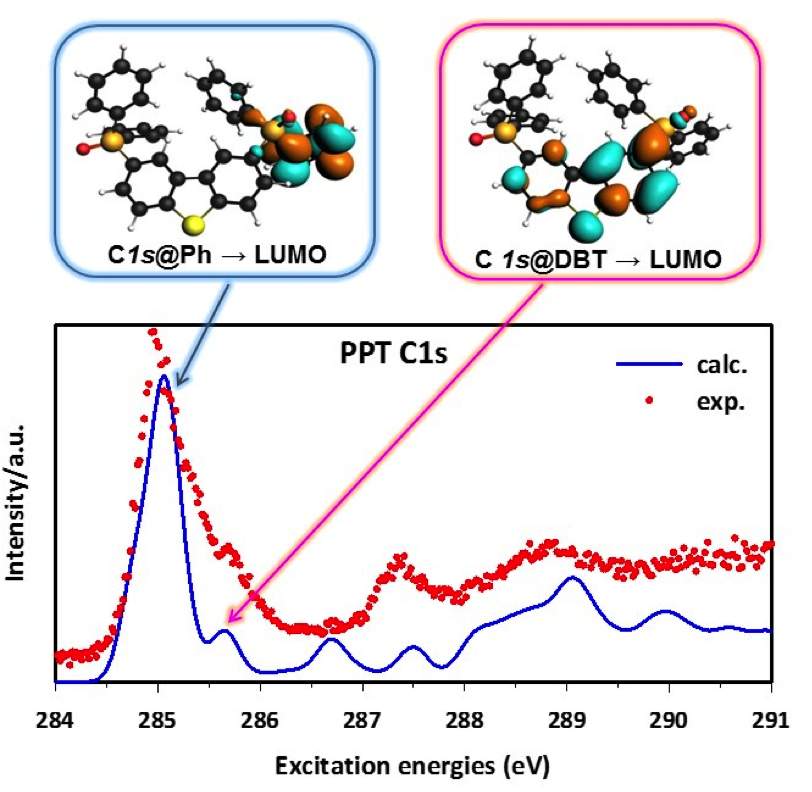XPS and NEXAFS study of an ambipolar phosphorescent host material for OLEDs
The single channel DFT-KS approach with Transition Potential (TP) scheme1 (DFT-TP) is able to describe the K-shell NEXAFS spectra of light atoms by including most of the relaxation effects upon the core−hole formation. It provides a single set of orthogonal orbitals from which transition dipole moments can be obtained.
The K-shell NEXAFS spectrum is obtained by performing separate computations of the excitation spectrum for each nonequivalent atomic site and by summing up the different contributions weighted by their relative abundance. This allows the deconvolution of the total spectral profile into components which facilitate the attributions of the spectral features to specific portions of the molecule.
A recent application of the DFT-TP approach considered the simulation of C1s and O1s NEXAFS spectra of the 2,8-bis-(diphenylphosphoryl)-dibenzo[b,d]thiophene (PPT), a ambipolar phosphorescent host material recently introduced in OLEDs, to interpret the experimental spectra obtained at the gas phase beamline of the Elettra Synchrotron in Trieste.2 PPT can be considered ideally formed by two diphenylphosphine oxide (dPPO) moieties functionalizing the small dibenzothiophene (DBT) core.

The DFT-TP calculations at the C K- edge show that the main peak of the C1s spectrum of PPT can be attributed to the phenyl rings of the dPPO arms while the second less intense peak to the phenyl ring part of the DBT core of PPT.
The conclusions from this work are highly relevant for future OLED applications and state as follows: the phosphine oxide groups of PPT act as breaking points of the π-conjugation between the DBT core of PPT and the outer groups. However, these groups do not affect the electronic properties of the central DBT moiety to a significant extend.
1. J.C. Slater, “The self consistent field for molecules and solids: quantum theory of molecules and solids”, Vol. 4 (McGraw-Hill, New York, 1974).
2. A. Guarnaccio, T. Zhang, C. Grazioli, F. Johansson, M. Coreno, M. de Simone, G. Fronzoni, D. Toffoli, E. Bernes, C. Puglia, J. Phys. Chem. C 2020, 124, 9774−9786.